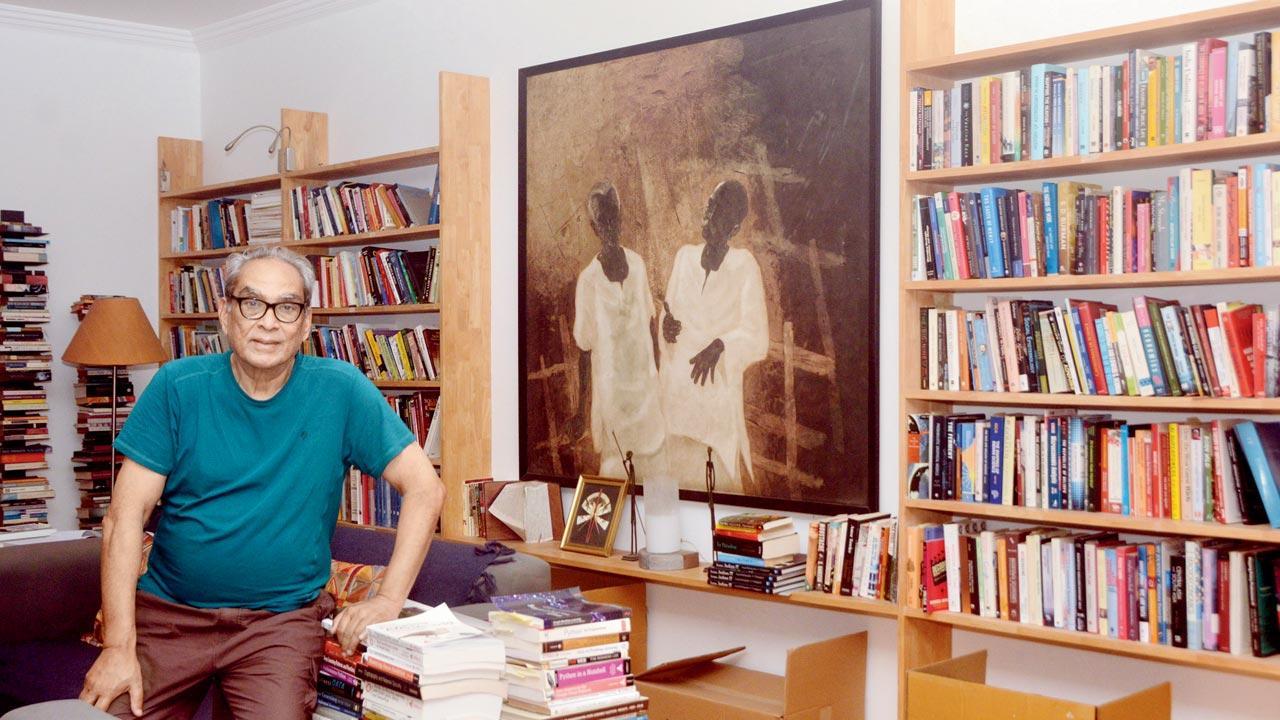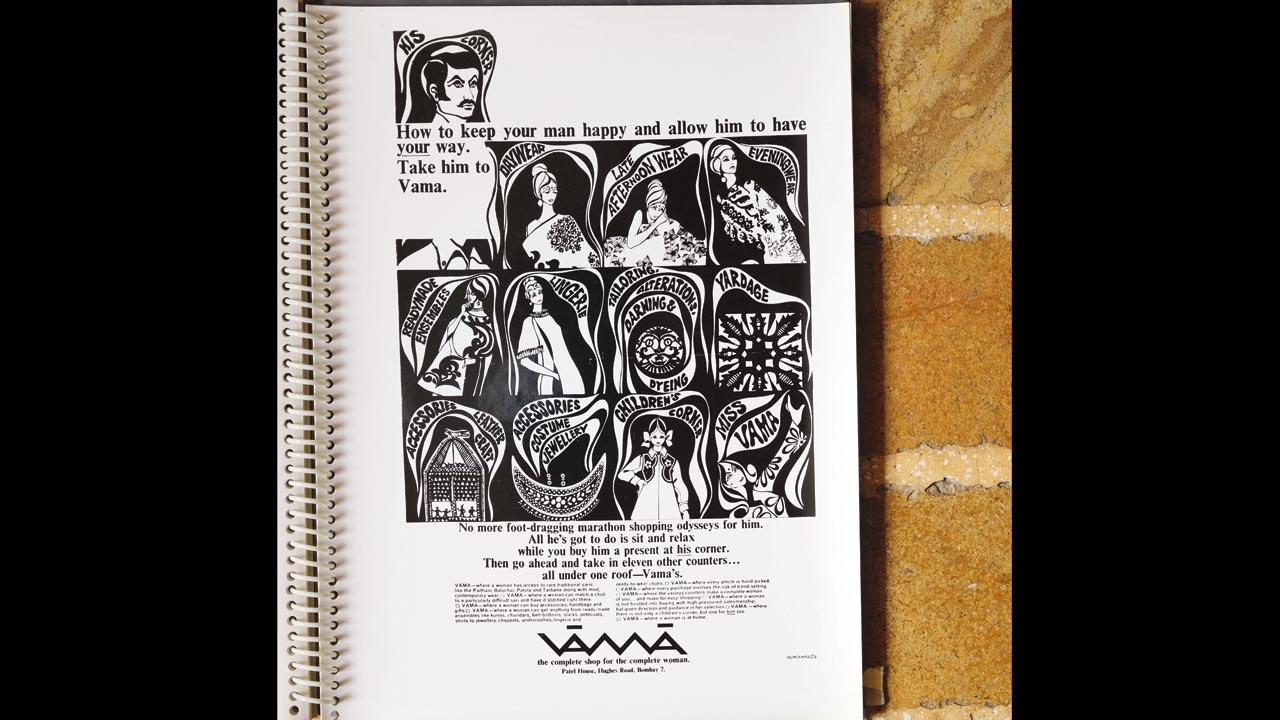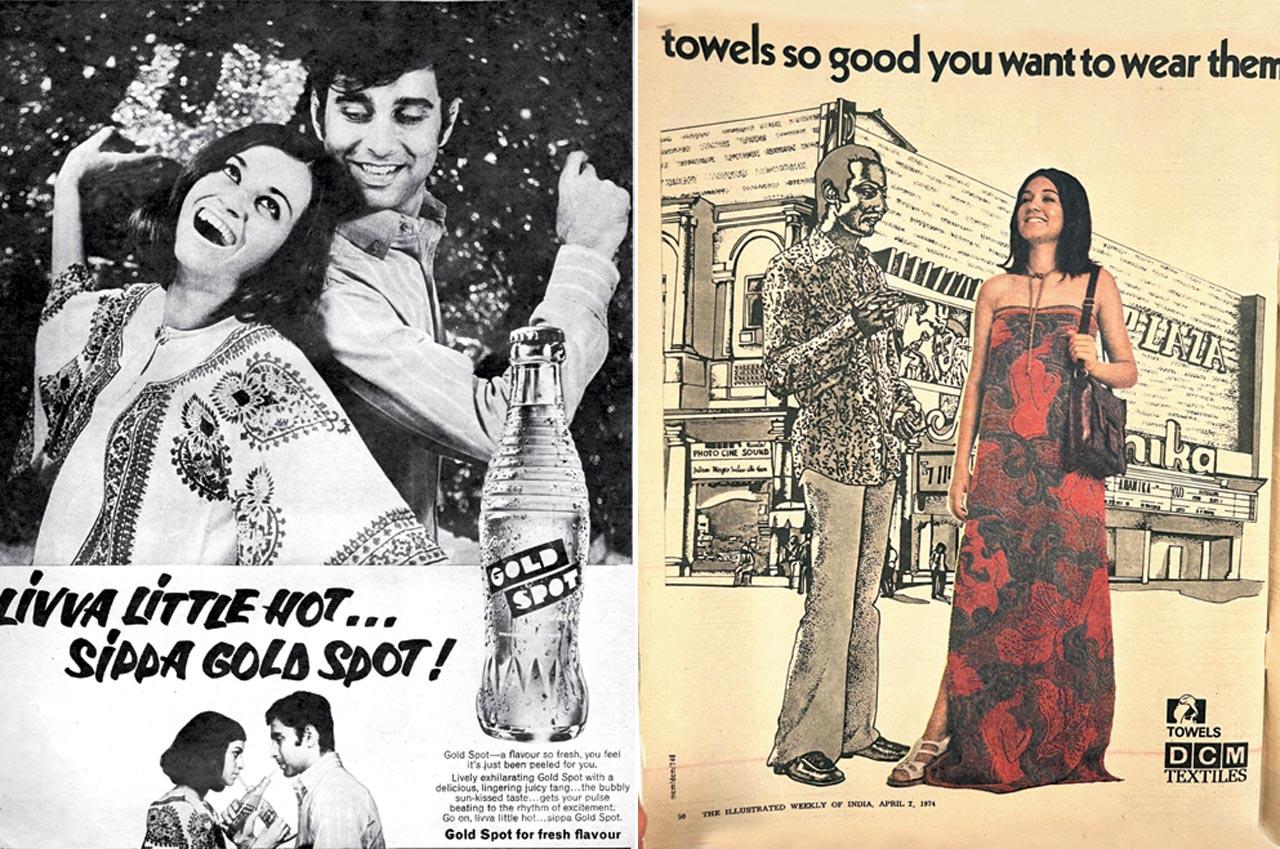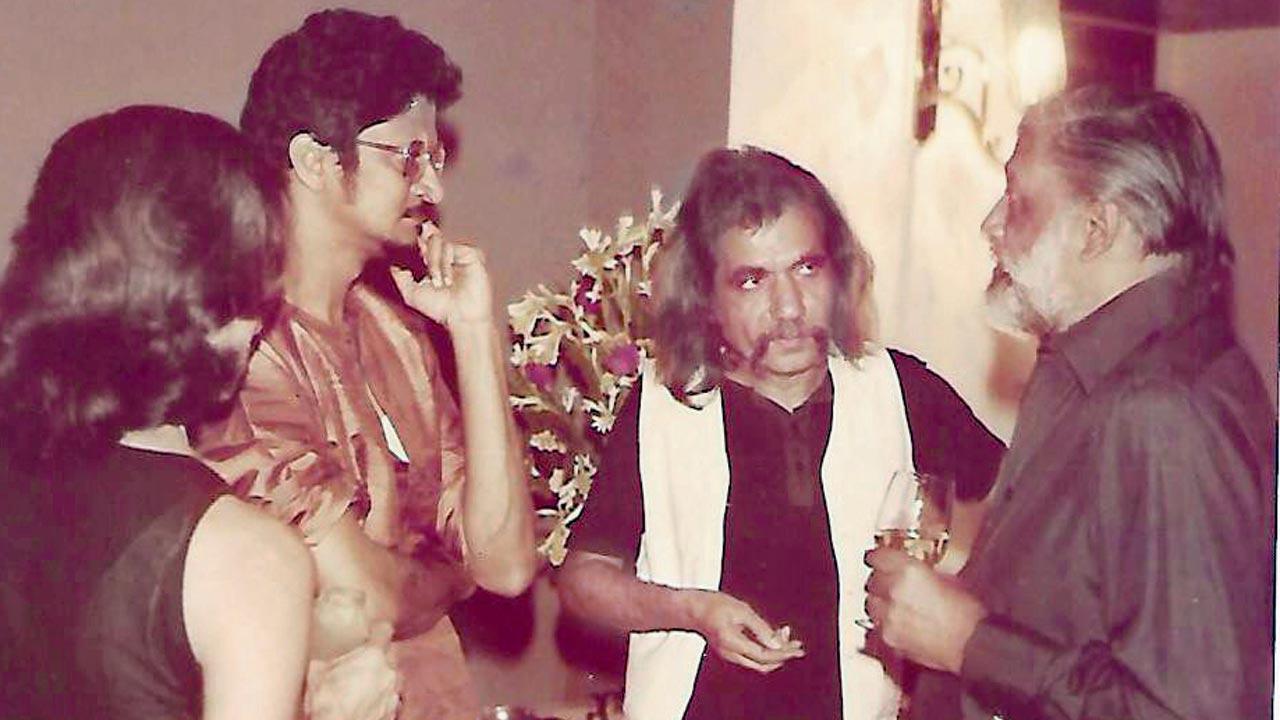Catching up with the old league of a creative agency that changed Indian advertising forever

Ajit Balakrishnan at home in the Colaba building that was also the office address of MCM, with interiors designed by the agency’s art director Panna Jain. Pic/Satej Shinde
 Even without matching these cult lines from MCM (Mass Communication and Marketing) to their provocative images, what comes shining through? Bold advocacy, clever imagination leaps, infectious joie de vivre, high recall value.
Even without matching these cult lines from MCM (Mass Communication and Marketing) to their provocative images, what comes shining through? Bold advocacy, clever imagination leaps, infectious joie de vivre, high recall value.
ADVERTISEMENT
The mid-1960s to 1970s were undoubtedly a defining decade for Indian advertising. And charismatic poet-copywriter Kersy Katrak reigned as acknowledged leader of the pack. MCM, the agency he opened in 1965, proved a remarkable cradle and catalytic base, moulding industry legends well over the next half-century with the creative cross-pollination that it spawned.
Katrak’s daredevil approach to advertising—as a business of the best ideas—attracted the cream of countrywide talent. Fresh recruits ranged from the brightest MBA grads to the finest poets and writers. The phenomenal roster rolled forth heavyweights like Ravi Gupta, Arun Nanda, Ajit Balakrishnan, Mohammed Khan, Sudarshan Dheer, Veeru Hiremath, Anil Kapoor, Kiran Nagarkar, Arun Kolatkar, Panna Jain and Arun Kale.
 The ad announcing the opening of Vama department store—copy by Kiran Nagarkar and illustrations by Arun Kolatkar
The ad announcing the opening of Vama department store—copy by Kiran Nagarkar and illustrations by Arun Kolatkar
Just 29 when he stirred this compelling crucible, Katrak believed the biggest risk was to take none. His crew cocked a snook, demolished rules, changed the game irreverently and irrevocably.
Traditional advertising had worked with little originality. A client environment led by foreign firms merely substituted Indian models in templates created abroad. Katrak sold non-multinationals, ads with compelling Indian metaphors. They were drummed up with audacity and executed with ingenuity.
“Kersy’s genius brought ‘creative’ to the fore in Indian advertising. The context he did this in is important,” says Ajit Balakrishnan, founder CEO of Rediff.com. “In the mid-1960s, American advertising, almost exclusively on Madison Avenue, was influenced by social upheaval—anti-Vietnam War protests, the coming of age of the Baby Boom, an explosion of music with Bob Dylan, the Rolling Stones and the Beatles. Instead of the hard sell, discount-oriented phraseology of department store sales, advertising leapt into visual symbolism and illusory copy.”
 MCM ads for Gold Spot and DCM Towels
MCM ads for Gold Spot and DCM Towels
Mohammed Khan, who went on to establish the iconic Enterprise Advertising, was horrified, on his return from England, to find Indian advertising in a primitive stage. “People were unable to differentiate between a brief and an ad. Except for Amul [I worked with Sylvie daCunha before MCM], Air India and the wonderful work of Frank Simoes, a headline would typically be: ‘Headache? Take an Aspro, or Anacin’… or whatever. In this milieu, MCM made a hugely visible impact. It was that great creative shop where an awesome pool of talent Kersy had the eye to choose, produced stunning visuals and copy.”
Katrak’s right-hand man, Ravi Gupta, came with a mining engineering degree from the UK. His interest in advertising took off when a foundry, planned by his family dealing in stainless steel, did not. Gupta’s daughter Ritu Nanda says, “Combining strategy and creativity, my father grew totally passionate about advertising. MCM truly turned around brands. They sang their ad lyrics at parties—‘Livva little hot/Sippa Gold Spot’, or the Hindi ‘Jee bhar ke jiyo/Gold Spot piyo’, while uncorking bottles! It was fun and confident advertising.”
Gupta put MCM in the picture for environmental activist Bittu Sahgal, then a 19-year-old salesman. “The agency was metamorphosing from ‘selling spin’ to selling hardcore marketing strategy to owners of companies wanting year-end profits, not empty image massages,” says Sahgal, appointed trainee accounts executive. “Akbar Hydari’s WIMCO, the Mulchandanis’ Bush Radios, Ramesh Chauhan’s Gold Spot and Rim Zim drinks, even Susheel Somani’s risque Debonair magazine, had Kersy’s genius stamped over them, coupled with Panna Jain’s visualisation and Ravi Gupta’s savvy mandi-market business sense.”
 Nagarkar, Kolatkar and Bal Mundkur. Pic Courtesy/ Tulsi Vatsal
Nagarkar, Kolatkar and Bal Mundkur. Pic Courtesy/ Tulsi Vatsal
Besides campaigns like Gold Spot cheerily challenging stiff competition (in a completely Coca Cola world), MCM pioneered certain forerunners of lifestyle advertising. When 20 x 3 column ads were considered sizeable, its art directors produced ads five times larger. The Shaver Swish cartoon character conceptualised, birthed animated heroes. A raging hit, Ramon Bonus Stamps marked a precursor to subsequent loyalty programmes. Other popular campaigns included Morarjee Mills for which Jain conceived a four-pager, experimenting with over 80 fonts, Laxmi Vishnu Sarees, IBM, LIC, Ciba, Godfrey Phillips, Grindwell Norton and DCM (draping Maneka Gandhi in DCM towels).
A celebrated copywriter-art director duo in advertising history, MCM’s Kiran Nagarkar and Arun Kolatkar pulled beautifully together. Illustrator Kolatkar, art director Jain and typographer Sudarshan Dheer were among the agency’s first hires. Their prioritised induction reflected Katrak’s vision. Respecting the vital role artists played, he accorded them distinctive status.
“Deservedly, when you think of someone like Arun draw lines on paper,” says Dilip Bhende, an MCM accounts executive. “Doodling in less than five minutes, he started at a particular point, finished the job, closed the pen. Single stroke, no back and forth moves. I’ve yet to see an art director deliver this way. Uniqueness was fully encouraged. A free-spirited, legs-on-the-table office atmosphere pushed out amazing thought. The theatre guy he was, that mirrored Kersy’s showmanship too of course.”
Jain was introduced to Katrak at Mitter Bedi’s photo studio. “With no office, we sat in Kersy’s car on Marine Drive. There, I designed the MCM logo on the back of a cigarette pack,” he recalls. Scouting for work from the first of three Colaba office addresses (14 Oliver Street), they netted small assignments initially.
The breakthrough came with publicising WIMCO match manufacturers. Featured in half-page ads of a national daily on nine consecutive days, Jain’s powerful conceptualisation sprang from a stark black background. Different hands seen striking matches to light a diya, suggested the
product’s universality.
“The WIMCO campaign also introduced quarter-tone screen technique for sharp quality reproduction in print media,” observes creative director Arun Kale whom Jain spotted, fresh from the JJ Institute of Art in 1967. “Indian advertising would either adapt something from parent overseas counterparts for local acceptance or follow an age-old formula of ‘the product copy logo’. MCM was one of the first to break that concept. Every piece of communication from its stable set trends. They had a strong servicing team. Many times, Kersy himself headed the pitching with elan.”
Describing Katrak as a true maverick, his nephew, Amul man Rahul daCunha, recalls, “I must be in my early teens when I got a real understanding of the incredible myth and legend MCM was. Kersy was a comet, blazing the ad scene and revolutionising it. He put the creative person above all else, seeing him or her as the real binder of an agency. Clients loved buying work from the creator. It wasn’t some suit sitting before them to sell. For the short while the agency was around, before going into disrepute, that advertising simply stood apart. The philosophies of Trikaya, Rediffusion and Enterprise—for Ravi Gupta, Arun Nanda and Mohammed Khan—came out of MCM. They were the Mad Men of their day. To be in advertising you need to be slightly mad.”
Katrak’s daughter Maia, founder chairman of The Republic agency, was excited by the ambience as a child. A procession of khadi kurta-clad gentlemen dropped by their ninth-floor house in Bakhtawar building, below which lay the office. “They sported long hair, chain-smoked, sipped drinks dispensed from my father’s antique bar, had intense discussions. The studio had a lot of men speaking Marathi. I recently connected with Arun Kale who confirmed he and Arun Kolatkar were among them. I’d run down after school because the office buzzed with energy. MCM handled the Peppino soft drink brand. Its film, shot by a very young Prahlad Kakkar in our home, had people dancing with abandon to the ‘Pep-pep-Peppino’ jingle. Wearing bell-bots and headbands, they were hippie and Woodstock-esque.”
Much of that flair and flamboyance dived into turbulence and the agency’s eventual closure. Over-budget extravagances and chronically pending payments triggered the sad slide, a far cry from its meteoric soar. Veterans describe the debacle in tones from kind to frank.
Balakrishnan traces the fall temperately—“The early 1970s brought economic crises. Nearly 100 textile mills in Bombay, the main advertisers, cut costs. MCM, like other businesses of that time, ran out of cash. I and my colleagues, Arun Nanda and Mohammed Khan, decided to try our own luck with Rediffusion in 1973.”
More vocal on the issue, Khan says, “For all the brilliance, MCM was a lesson in how not to run an ad business. What could become the largest, most profitable agency, ended a real mess. In the brief period we were there, Ajit brought in financial discipline, while Arun and I built a lot of credibility with clients. Us being asked to leave was the last nail in MCM’s coffin. I went ahead and started Rediffusion with Arun and Ajit.”
According to Sahgal, “The world had changed, Kersi had not. A creative powerhouse, he had no head for money. MCM consequently went bankrupt. But it ended up being the Mothership which launched the leading lights that dominated Indian advertising for decades.”
Author-publisher Meher Marfatia writes fortnightly on everything that makes her love Mumbai and adore Bombay. You can reach her at meher.marfatia@mid-day.com/www.meher marfatia.com
 Subscribe today by clicking the link and stay updated with the latest news!" Click here!
Subscribe today by clicking the link and stay updated with the latest news!" Click here!







